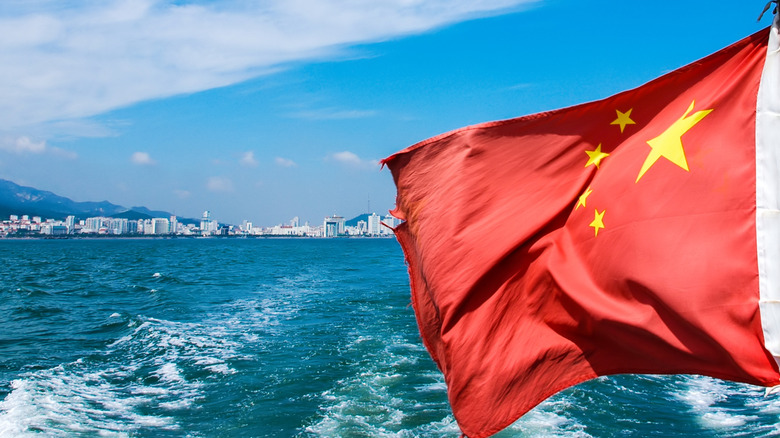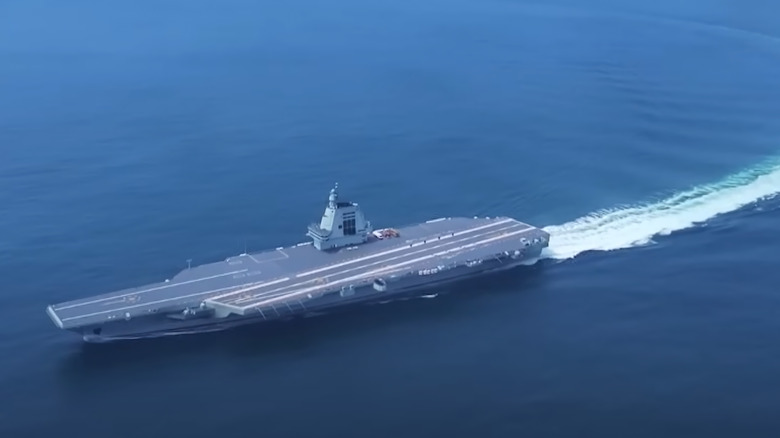All About China's 'Unsinkable' Fujian Aircraft Carrier & How Many Jets It Can Carry
Last month, the Chinese military started sea trials on its newest aircraft carrier, the Type 003 "Fujian," according to the People's Liberation Army Navy and a number of state media outlets. Whereas the nation's previous two aircraft carriers were bought from Russia and modified for use by China, the Fujian is an in-house design, looking more like an American aircraft carrier with a flat flight and storage deck.
The trial that wrapped up in early May after eight days at sea was a success, according to the state-sponsored video agency CCTV, which reported that all of the vessel's systems were "functioning as expected" during testing. While exact details about those systems are limited — and China likely isn't going to publish much concrete information about its newest warship anytime soon — there are still some capabilities you can glean from pictures and preliminary research.
First and foremost, the Fujian is not nuclear-powered like the Nimitz-class and Gerald R. Ford class aircraft carriers sailed by the United States. The means of propulsion aren't exactly known, but publications like Naval Technology hypothesize that it's likely powered by a diesel-electric system, like most other large naval vessels. The outside may look cutting edge, but the engine is decidedly pedestrian. It may be rugged and reliable, but it's not literal nuclear science. The Fujian might be able to let the Chinese military reach out just a little further, but it will need to refuel at some point.
Fujian's combat capabilities
Aside from the powerplant, the Fujian's similarities to American carriers continue. To get aircraft in the air, it uses an electromagnetic launch system. According to the United States Naval Institute, American carriers use the same system. As for what aircraft it will be carrying and launching, Naval Technology estimates that it can carry anywhere between 50 and 60 planes. Those planes will likely be J-15 air superiority fighters, joined by KJ-600 early warning aircraft. The J-15, called the "Flanker X2" by NATO, is China's fourth-generation carrier-based fighter and roughly analogous to the carrier-based American F/A-18 Super Hornet.
As far as size, the Fujian displaces 80,000 tons and stretches an estimated 316 meters (1,036 feet). For comparison, the U.S.S. Gerald R. Ford displaces over 100,000 tons and is 1,106 feet long. The Fujian is big and bad, but it's not the biggest and the baddest, not by a long shot. It's also worth noting that while the Type 003 Fujian is a huge development for China's navy, the United States Navy still dwarfs it both literally and figuratively with its 11 nuclear-powered aircraft carriers.

